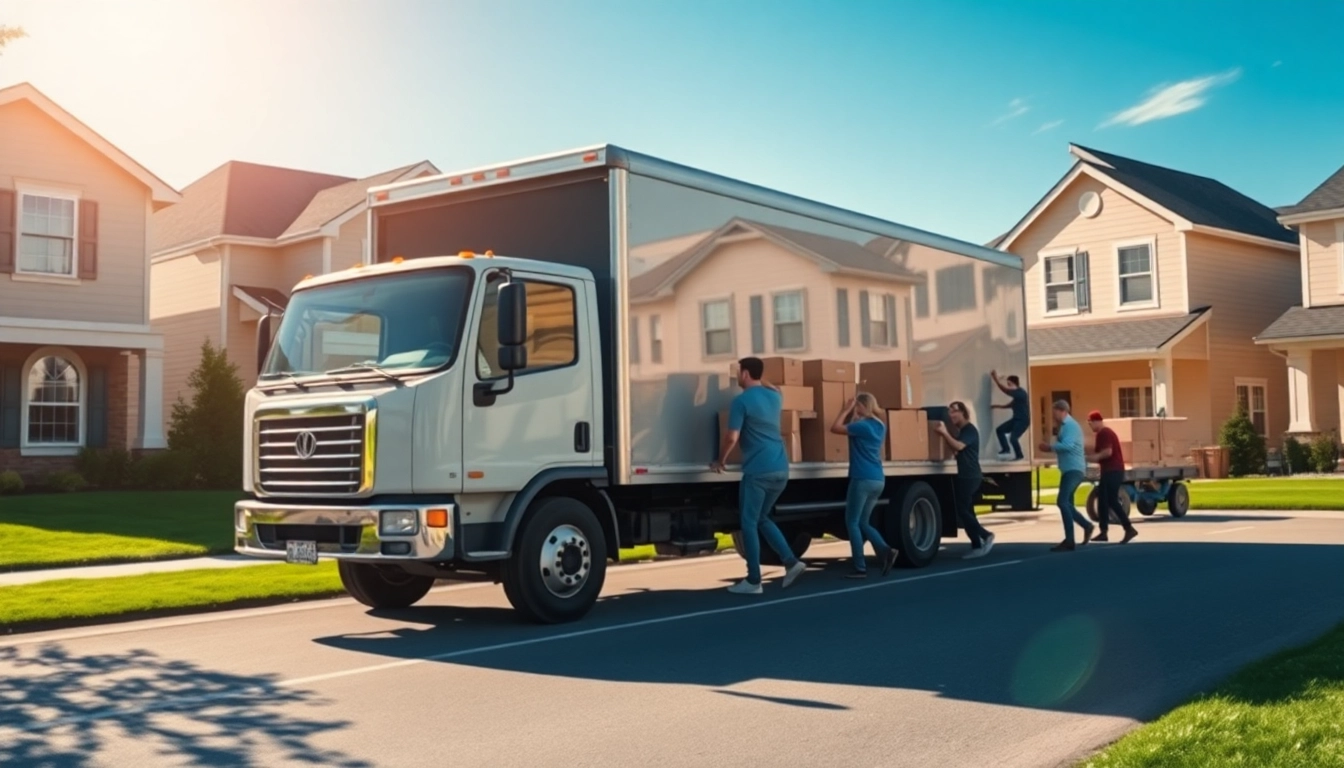The Importance of Planning Your House Moves
Planning your house move is crucial to ensure a smooth transition from one home to another. A chaotic moving process can lead to stress, lost items, and unforeseen expenses. By taking the time to prepare, you can avoid common pitfalls and keep your move organized. One effective strategy is to incorporate a reliable service that specializes in house moves. This article will guide you through the essential steps of planning, from creating checklists to managing your budget.
Creating a Moving Checklist
A moving checklist is an invaluable tool that helps you keep track of tasks leading up to your moving day. To create an effective checklist, follow these steps:
- Prioritize tasks: Identify tasks that are critical, such as packing and notifying utilities, and place them at the top of your list.
- Break tasks into smaller steps: For example, instead of just writing “pack,” break it down further into “pack kitchen items,” “pack bedroom items,” etc.
- Set deadlines: Assign realistic deadlines for each task to keep yourself accountable and on schedule.
- Use digital tools: Consider utilizing moving apps that can help organize your checklist and send reminders.
Setting a Realistic Timeline
Establishing a timeline for your move is essential for preventing last-minute chaos. A good rule of thumb is to start planning at least 6-8 weeks in advance for local moves and even more for interstate moves. Here’s how to set a realistic timeline:
- Determine your moving date: Try to choose a date during the middle of the month or a weekday to avoid peak moving times.
- Count backward: From your moving date, list all tasks that need to be completed, working backward to ensure everything is done.
- Schedule check-ins: Include weekly check-ins to evaluate your progress and adjust the timeline as needed.
Budgeting for Your House Move
Moving can quickly become expensive, so creating a budget is a key part of your planning process. Here are steps to help you effectively manage your moving costs:
- Identify all expenses: Factor in moving companies, packing supplies, and any additional fees that may arise.
- Get quotes: Reach out to multiple moving services to obtain quotes and compare pricing.
- Allocate a contingency fund: Set aside 10-15% of your budget for unexpected costs.
Choosing the Right Moving Services for House Moves
Selecting a moving service that fits your needs can significantly ease the burden of your house move. With various options available, it’s essential to understand your choices:
Types of Moving Companies
When selecting a moving company, be aware of the different types of services they offer:
- Full-service movers: They handle everything from packing to unpacking. Ideal for those looking to save time and reduce stress.
- Self-service movers: Ideal for budget-conscious individuals who prefer packing their belongings but want transportation for larger items.
- Specialty movers: If you have unique items like pianos or antiques, look for moving companies that specialize in these specific types.
DIY vs. Professional Movers
Deciding between a DIY move and hiring professional movers depends on various factors, including your budget, time constraints, and the size of your move:
- Pros of DIY: You have full control over the process and can potentially save money.
- Cons of DIY: It can be physically demanding and time-consuming. Plus, unexpected issues may arise if you are inexperienced.
- Pros of professional movers: They offer expertise and efficiency, saving you time and effort on moving day.
- Cons of professional movers: It can be more expensive, and ensuring you choose a reputable company is vital.
How to Evaluate Moving Quotes
When receiving moving quotes, not all estimates are created equal. Here are steps to ensure you’re making informed decisions:
- Understand the quote types: Quotes can be binding or non-binding. Understand the differences and how they affect your final cost.
- Compare similar services: Ensure that quotes are based on similar services; this includes packing services, transportation, and insurance coverage.
- Read reviews: Research the companies and read customer feedback to gauge their reliability and performance.
Packing Tips for Smooth House Moves
Packing can often be the most daunting part of a move. Efficient packing is key to ensuring that nothing gets damaged and everything remains organized. Here are some tips to ease your packing process:
Essential Packing Supplies
Gathering the right packing supplies can make the process much easier. Here’s a list of essential packing materials:
- Boxes: Invest in various box sizes, as well as specialty boxes for items like clothes and dishes.
- Packing tape: Choose high-quality tape that can withstand the weight of your belongings.
- Bubble wrap or packing paper: Use for cushioning fragile items like glassware and breakables.
- Markers: Color-coded markers can help label boxes based on the room to streamline unpacking.
Best Practices for Packing Fragile Items
Fragile items require special care. Here are packing best practices to protect your belongings:
- Wrap individually: Wrap each fragile item in bubble wrap or packing paper before placing it in boxes.
- Fill empty spaces: Use packing peanuts or crumpled paper to fill gaps in boxes, preventing items from moving during transit.
- Label clearly: Always mark boxes containing fragile items as “FRAGILE” and “THIS SIDE UP” to ensure careful handling.
Labeling Boxes Effectively
Proper labeling can save you a lot of time during the unpacking process. Here are effective labeling strategies:
- Use clear descriptions: Instead of just labeling boxes with “kitchen,” specify “kitchen utensils” or “glassware” to avoid confusion.
- Color code: Assign colors to different rooms, allowing for visual identification while unloading.
- Keep an inventory list: Maintain a separate list correlating to the boxes’ numbers and contents, which can help track missing items.
Executing the House Move Day
The day of the move can be hectic, but with careful planning and coordination, you can ensure everything runs smoothly. Here’s how to prepare for a successful moving day:
Coordinating with Movers
Effective communication with your chosen moving service can make all the difference on moving day:
- Confirm details: Reconfirm the moving date, time, and any last-minute requirements beforehand.
- Designate roles: Clearly communicate with your movers about what needs to be packed, disassembled, or loaded first.
- Be available: Ensure you are present during the move to address any questions or manage the process.
Final Walkthrough Before Leaving
Conducting a final walkthrough of your old home ensures that nothing is overlooked. Here’s what to check:
- Check all rooms: Verify that none of your belongings have been left behind in closets, attics, or basements.
- Inspect appliances: Ensure that all appliances are disconnected and noted if left behind for the new owners.
- Check utilities: Turn off lights, lock windows and doors, and make sure that utilities are properly disconnected.
Unpacking Strategies for a New Home
Once you’ve arrived at your new home, unpacking can also become overwhelming. Here are strategies for efficient unpacking:
- Prioritize essentials: Unpack items you will need immediately, such as toiletries, kitchen essentials, and bed linens.
- Set up rooms: Work room by room to create a sense of accomplishment instead of feeling overwhelmed with the entire house.
- Avoid day-long unpacking sessions: Break the unpacking into manageable chunks over several days to minimize fatigue.
Post-Move Considerations and Settling In
Moving doesn’t end when the last box is unpacked; several considerations remain as you settle into your new environment:
Transitioning Utilities and Services
Ensuring your utilities and services are set up in your new home is crucial for comfort and functionality. Here’s how to manage this effectively:
- Schedule utility setup: Ideally, arrange for utilities to be activated before your arrival to enjoy seamless comfort upon moving in.
- Change your address: Notify the post office and any crucial institutions of your new address to ensure your mail is forwarded.
Familiarizing Yourself with the New Neighborhood
Getting to know your new community has lasting benefits, helping you feel settled and integrated. Consider these strategies:
- Explore local amenities: Visit nearby grocery stores, restaurants, parks, and public services to get a feel for the area.
- Meet the neighbors: Introduce yourself to your neighbors, and consider hosting a small gathering to foster community ties.
- Join local groups: Participate in community events, clubs, or online neighborhood forums to stay connected and informed.
Tips for Making Your New House a Home
Transforming a new space into your home goes beyond unpacking. Here are tips to personalize and embrace your new environment:
- Decorate to reflect your style: Invest time in personalizing your space with furniture and decor that reflects your personality.
- Create functional spaces: Arrange furniture to create inviting spaces for relaxation, work, and gatherings.
- Establish routines: Familiarize yourself with your new home’s layout and establish daily routines that make the space feel comfortable and familiar.
Overall, efficient planning, choosing the right services, effective packing, and thoughtful settling-in strategies can create a stress-free moving experience. By carefully considering each step of the process and adapting to your new home, you can make a house move not just a transition but a positive new beginning.



